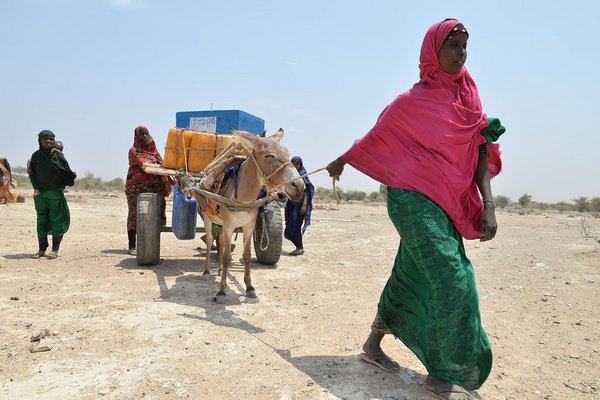- Share this article
- Subscribe to our newsletter
Food security concerns for East Africa
Severe dryness at the start of the first rainy season in 2019 raises food security concerns for East Africa, according to a Special Alert published by the Global Information and Early Warning System on Food and Agriculture (GIEWS) of the Food and Agriculture Organization of the United Nations (FAO) in late April 2019.
The Tropical Cyclone “Idai” redirected precipitations away from East Africa, causing suppressed rainfall in the region during early March and mid-April. The current dry weather conditions compound the impact of the poor October-December rains in 2018.
The dryness has resulted in the delay and disruption of planting operations and has severely impacted crop germination. Crop production is expected to be well below average levels, according to the Special Alert. In pastoral areas, the dry conditions caused the deterioration of already poor rangeland conditions and widespread water shortages, with a significant worsening of animal body condition.
The worst affected areas are most of Somalia, south-eastern Ethiopia, which did not receive any significant precipitation so far, and northern and eastern Kenya, where some scattered showers were received only in late March. In most of Uganda and in some north-eastern areas of the United Republic of Tanzania, cumulative rainfall between early March and mid-April was up to 85 per cent below average.
Rainfall forecasts for May point to persisting dry conditions in most of Somalia and in northern and eastern Kenya, while average to above-average rains are expected in eastern Ethiopia, southern and north-western Somalia, southern Kenya and parts of Uganda and the United Republic of Tanzania.
But these late-season rains are likely to be insufficient for crop recovery in crop-producing areas of Uganda, southern Somalia, eastern Ethiopia, south-eastern Kenya and north-eastern United Republic of Tanzania, where harvests are gathered in June/July, and below-average harvests are expected.
(FAO/ile)
More information and download the GIEWS Special Alert No. 345 - East Africa, 23 April 2019 www.fao.org/documents/card/en/c/CA4301EN





Add a comment
Be the First to Comment